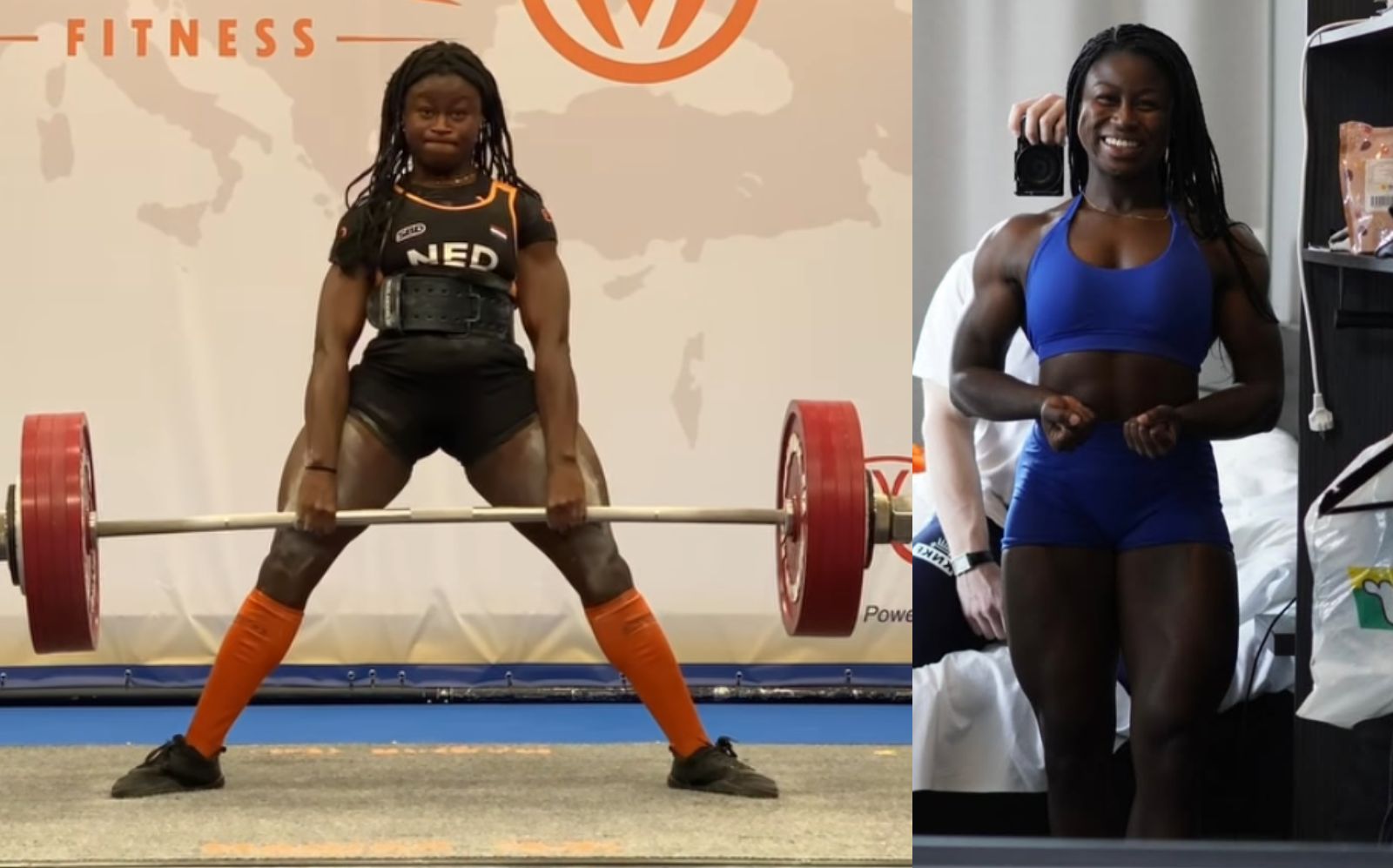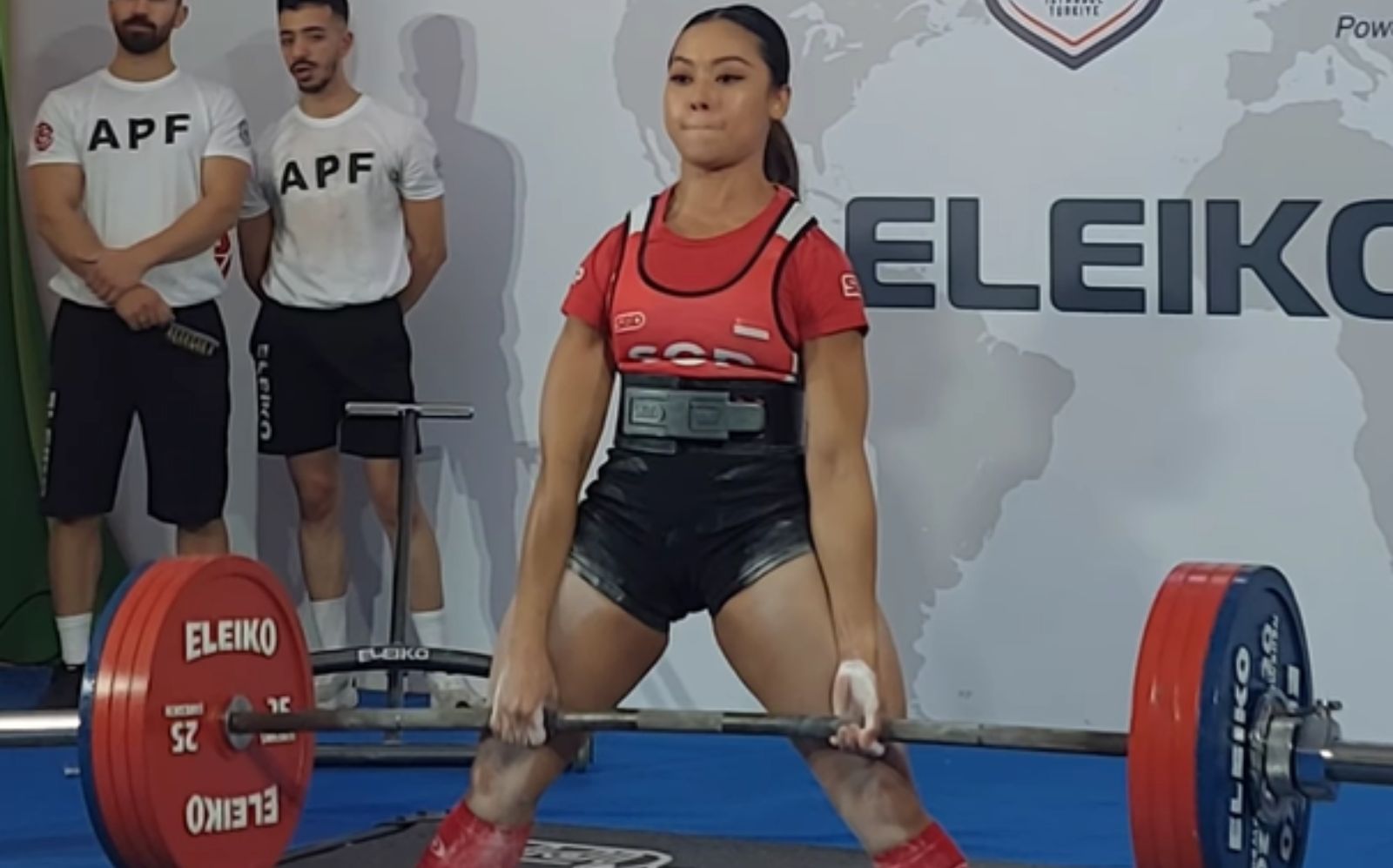If you haven’t tried the Hammer Strength Lat Pull then you should because it rocks for building your lats and back muscles and it feels amazing.
But don’t ignore all of the other movements that work the same muscles. These Hammer Strength lat pull alternatives / substitute include free weight, cable, machine, and bodyweight exercises for training variety which is important for preventing boredom, maximizing gains, and you may not have access to a Hammer Strength lat pull machine anyway.
Here are our picks…
Pull-Up/Chin-Up
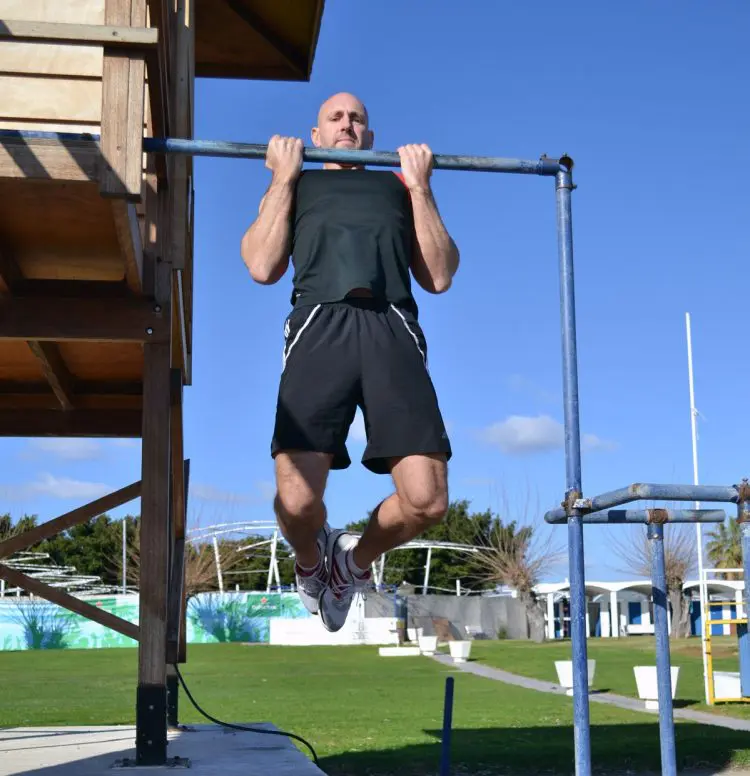
If you can do pull-ups, fantastic! If you cannot, you should practice until you can.
Why?
Because it’s an incredible back-builder and you may need to be able to pull yourself up one day to save your life.
Level Up Your Fitness: Join our 💪 strong community in Fitness Volt Newsletter. Get daily inspiration, expert-backed workouts, nutrition tips, the latest in strength sports, and the support you need to reach your goals. Subscribe for free!
It’s also a good test of your upper body strength and fitness and makes for the perfect alpha male challenge if you have buddies who can do pull-ups too.
But there’s some science behind the effectiveness of this exercise.
In an ACE-sponsored study, the pull-up beat out the chin-up, lat pulldown, bent-over row, inverted row, seated row, TRX, and I-Y-T raise when tested to see how much these movements activate the latissimus dorsi muscles.
Well, we don’t really need research to convince us of how awesome pull-ups are. But in case you were skeptical…
As for ways to increase your pull-up strength, there are a few methods to use.
You can practice assisted pull-ups whether using a dedication machine or wrapping bands under your lower legs. Another good option is to jump yourself to the top of a pull-up bar and try to hold yourself up as long as you can.
Weighted back exercises and progressive inverted rows also help to build the back and arm muscles that contribute to your pull-up strength.
Now, if you want to increase the difficulty of pull-ups and chin-ups, there are also several ways to accomplish this. Use a dipping belt and add more weights, hold a dumbbell between your feet, wear a weighted backpack and if you’re a beast among beasts, learn the one-arm pull-up.
But really there are tons of pull-up variations you can do to take your gains to another level.
Cable Lat Pulldown
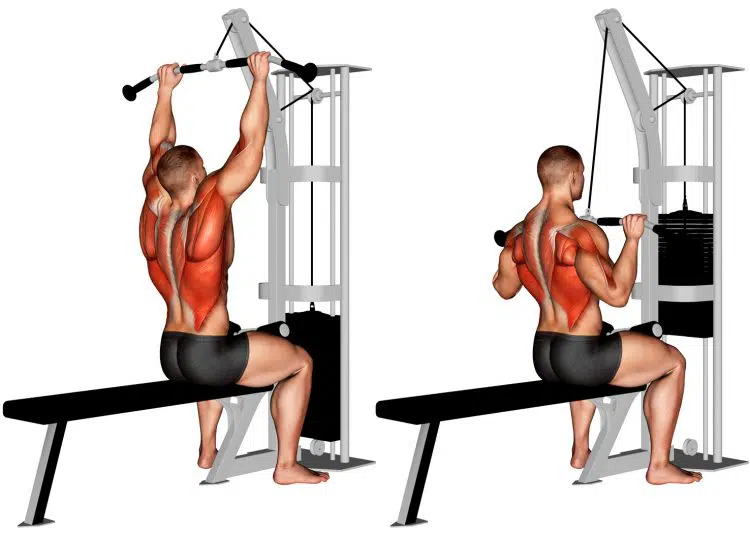
This one is a no-brainer. It’s probably the most popular lat-focused exercise aside from pull-ups, most likely because it’s comfortable and easy.
If you’re observant at your gym, you may notice that a lot of exercisers go straight to the cable lat pulldown machine before anything else.
Tip: Find Best Cable Crossover Machines Reviewed
That doesn’t mean they know how to use it though, as it’s also notorious for some bizarre technique and often features in fail compilations.
But when used properly, it’s very versatile because you can use different attachments and hand positions, and you can use various techniques to get more from it.
Related: The 9 Best Cable Back Exercises & Workouts to Level Up Your Training.
Inverted Row
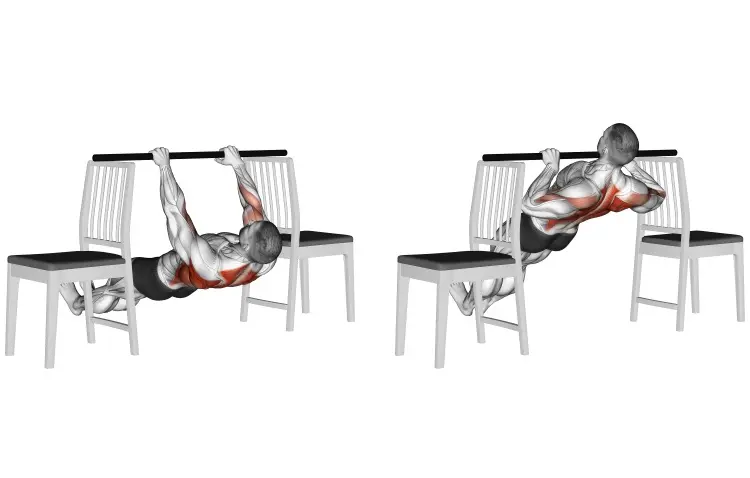
The inverted row or Australian pull-up is a phenomenal bodyweight exercise that is underrated, or at least I haven’t seen many people doing it at the gyms I’ve trained at.
It works the lats but also the rhomboids, traps, spinal erectors and rear delts.
Usually, it’s done by getting under a Smith machine bar and pulling yourself up like a row. However, you could technically do it at home using a sturdy table, countertop, broom handle and chairs, or you could use anything that allows you to grip and pull yourself up.
It’s also a great variation for those who cannot do a full bodyweight pull-up since your feet either remain on the ground or are elevated on an object, which makes the movement more challenging.
The higher the bar or gripping surface is, the easier the exercise is because your feet are closer to your body.
Bent-over Row
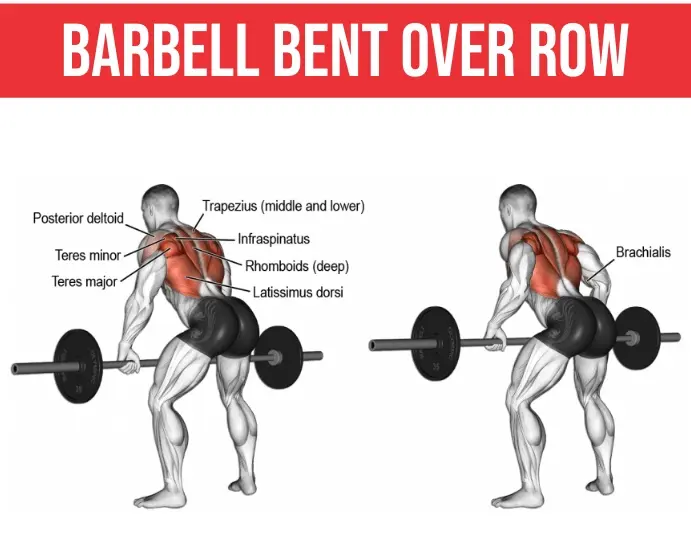
I always recommend the bent-over row because it does an amazing job at working the entire back musculature. And actually, I always refer back to the aforementioned study which compared it to other common back movements.
Researchers found that the bent-over row was superior for working the entire back symmetrically. Therefore, if you only had to choose one, it would be a great option.
While you can handle a lot of weight for this exercise which helps to build size and strength, you’ll also strengthen your lower back.
The lower back can often be a weak link for many and when it comes to spine loading movements (e.g. squats, deadlifts, etc). But keeping your core and body tight and rigid and lifting with good form will strengthen the lower back, and core muscles in general.
Related: Lower Back Pain: Common Causes and Prevention For Athletes.
There are also several ways to do it which is another reason to love it.
You can use a barbell, dumbbells, kettlebells, resistance bands, Smith machine, T-bar, landmine setup, loaded duffel bag, water jugs, and literally anything that you can use to do rows and build and strengthen your upper posterior muscles.
Suspension Pull-up
This one is similar to the inverted row or Australian pull-up but a little more difficult because the suspension straps are not stable like a bar (a good thing when done right).
Therefore, you have to also balance and stabilize your body and ensure you’re using proper form to prevent injury and to perform the pull-ups effectively.
The good thing about this exercise is you can do progressions and train according to your level of experience.
Here’s a video with progressions from easiest to most difficult.
Band Rows
Resistance bands are an amazing training tool. They’re cheap, light, take up very little space, and they’re more versatile than machines, cables, free weights, and probably anything!
There’s literally no exercise you can’t do using resistance bands which means they make for a great Hammer Strength lat pull alternative.
Want to do a bent-over row? No problem. All you have to do is grab the handles and stand on one or more bands to create resistance.
What about high standing or sitting rows? Easy, just wrap your band around a pull-up bar, tree, pole, or use a door anchor, and you can do most row variations.
You could even sit on the floor, on a chair, or weight bench, and pull the bands down to simulate the Hammer Strength lat pull.
Deadlift
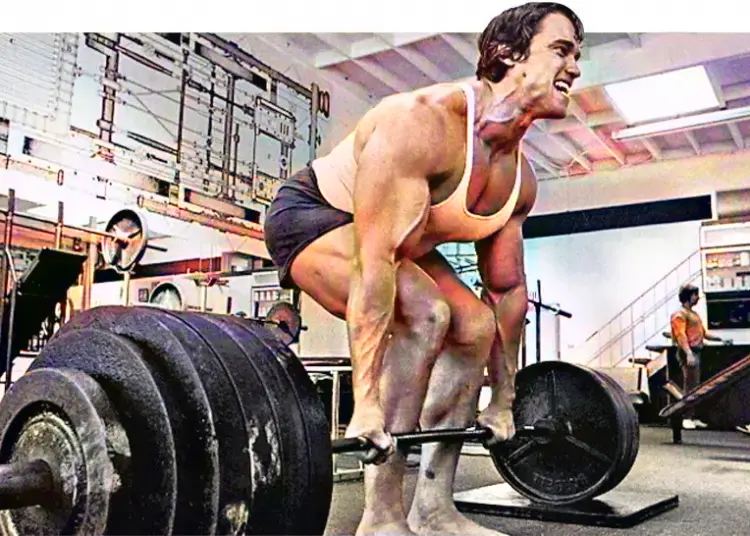
Most people would agree that if they could only choose one exercise to do, it’d be a deadlift or one of its variations.
There are several reasons for this.
Deadlifts are a total body movement that, if using a barbell, allows you to load up the most amount of weight your body can handle, and safely (when done with proper form and lifting within your capabilities).
Level Up Your Fitness: Join our 💪 strong community in Fitness Volt Newsletter. Get daily inspiration, expert-backed workouts, nutrition tips, the latest in strength sports, and the support you need to reach your goals. Subscribe for free!
Read: Deadlift Form 101: How to Lift More Weight Safely
The deadlift involves everything from your foot muscles to your core, back, arms, traps, and neck.
Now, you don’t have to only do barbell deadlifts, if you do them at all. There are many other variations or alternatives you can do.
Great choices include trap bar deadlifts, dumbbell deadlifts, Romanian deadlifts, Smith machine deadlifts, and the list could go on.
Also read: The 8 Most Common Deadlift Faults and How to Fix Them
Sliding Lat Pullovers
The sliding lat pullover is a great option for when you don’t have any workout equipment, or if you just want to do something different for lats.
So you can do it a few different ways.
Wear pants and slide on your knees (easier), wear socks and slide on your feet (harder), or place something like a towel under your knees to be able to slide your body back and floor on a slick surface.
If you’re a beginner, we recommend sliding on your knees first unless you have training experience and are simply trying out the movement for the first time. Although, it depends on how strong you are.
If you don’t have much upper body or lat strength, use a shorter range of motion. Then as you get stronger, use a larger range of motion which will provide more of a challenge.
You can also wear a weighted vest or backpack for a harder workout.
Partner Rows
Say it’s just you and a partner and nothing else. You can easily get a good back workout with just the two of you.
You can either do it standing, or similar to the inverted row.
For the standing variation, Grip your partner’s hand and alternate pulling. Your partner should be pulling while you row and vice versa to create resistance.
The inverted row variation is done by getting into position and holding your partner’s hands. You pull yourself up while they support you during the movement.
Here are two video examples.
Muscles Worked
These Hammer Strength lat pull alternatives will work all of the same muscles which are essentially all of the back muscles. However, we made sure that there was a focus on the latissimus dorsi.
Latissimus Dorsi
Also commonly called lats for short, the latissimus dorsi is a large muscle of the upper and mid-back that many say looks like a pair of wings when fully developed.
Its main function is to facilitate movement of the thoracic area and the arms. The lats, with the teres major and pectoralis major to adduct (bring toward the midline of the body) and medially rotate the humerus.
It also plays a role in the extension of the humerus as well.
Any pulldown variation is effective for working the lat muscles.
Rhomboids
The rhomboids are formed by two muscles: rhomboid major and minor, which are located on the upper back and sit deep to the trapezius muscles.
Along with other muscles, the rhomboids help form the shoulder girdle and subsequently facilitate movement of the upper extremity which includes scapular movement, stability pulling, throwing, and overhead arm movement.
The rhomboids also help to stabilize the shoulder girdle and scapula.
Erector spinae
The erector spinae muscles are formed on either side of the spine and function to help you stand straight and bend backward.
Teres Major
The teres major is also a rotator cuff muscle that’s located on the underside of the upper arm near the teres minor. It helps to stabilize the upper portion of the humerus, medially rotate the humerus, and works with the lats to move the humerus back and down when extended.
Teres Minor
Another rotator cuff muscle, the teres minor is the primary muscle surrounding the rotator cuff. It stabilizes the glenohumeral joint and is responsible for lateral or external rotation of the arm at the shoulder.
Trapezius Lower Fibers
The trapezius or traps for short are the muscles located near the upper back and neck. The trapezius lower fibers help with depression or pulling down the scapula in addition to aiding the upper fibers in upward rotation of the scapula.
The traps are important for lifting the arms overhead and throwing movements.
Trapezius Middle Fibers
The middle fibers of the trapezius are responsible for the adduction or retraction of the scapula. Every back exercise requires a degree of scapular retraction if you’re to do it safely and effectively.
Deltoid posterior
The deltoid posterior or rear delts is considered one of the three shoulder heads. It helps the front delts to stabilize the arm while the lateral delts abduct the arm (bring away from center of the body) from 15-100 degrees.
This head also works with the latissimus dorsi muscle of the back, to extend the arm while walking.
Again, many exercisers will neglect to train this muscle directly but that’s not recommended for health, posture/lifting posture, and having well-rounded and developed shoulders.
Biceps
Yes, the Hammer Strength lat pull and the alternatives included on this list involve the biceps, and surprisingly to most, you’ll get a lot of your biceps development from pulls.
The biceps have two heads: Short (inner) and long (outer).
The short head crosses the shoulder joint and both heads cross the elbow joint. The main function of the bicep is pronation (knuckles up) and supination (knuckles down) of the forearm.
However, it also flexes the elbow joint like when you perform a biceps curl.
Brachialis
The brachialis muscle is located deep to the outer portion of the biceps and is a flexor of the elbow at all forearm positions. Although, it has a disadvantage in elbow flexion when the forearm is supinated of which the biceps are the stronger elbow flexor.
When developed, the brachialis gives width to the upper arm.
Every pulling exercise such as rows, pulldowns, etc, involves the brachialis.
Brachioradialis
A muscle located on the lateral portion of the forearm, the brachioradialis, although primarily a flexor of the elbow, also functions to pronate and supinate the forearm.
Pulls are excellent for developing this muscle.
Other useful alternative exercises:
Wrapping Up
If you were looking for the best Hammer Strength lat pull alternatives then you’ve found them.
Of course, we didn’t fit every exercise into this article that we could have but these work very well and provide enough variety. Additionally, some are unique from the usual movements and there are ways to make most of these exercises more challenging so that you can keep progressing.





